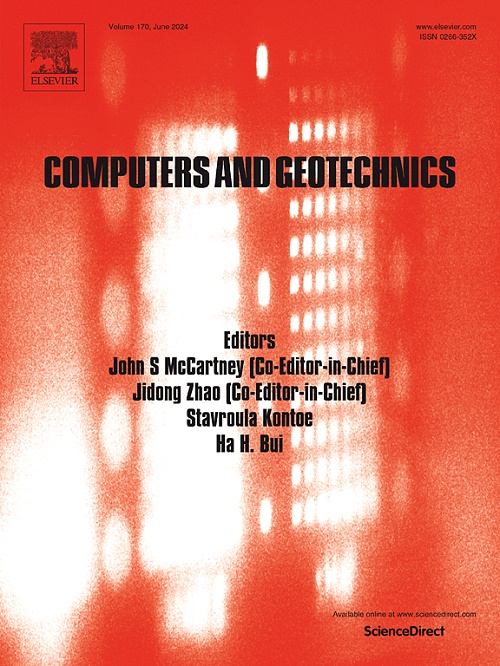A coupled mathematical model of microbial grouting reinforced seabed considering the response of wave-induced pore pressure and its application
IF 5.3
1区 工程技术
Q1 COMPUTER SCIENCE, INTERDISCIPLINARY APPLICATIONS
引用次数: 0
Abstract
Wave-induced instability of the sandy seabed has become an issue that cannot be ignored in the design of offshore foundations. Microbially induced calcium carbonate precipitation (MICP) is believed as a potential method to reinforce seabed against liquefaction. A bio-chemo-hydro-wave (B-C–H-W) coupled theoretical model of microbial grouting reinforced seabed considering the response of wave-induced pore pressure was developed in this study. The stability of MICP-reinforced seabed under wave actions with flower grouting and spot grouting conditions was also analyzed in detail. Results show that MICP reaction generates local calcium carbonate, which reduces the porosity and permeability coefficient, and enhances the stiffness of seabed, thereby reducing the amplitude of oscillating pore pressure. The mechanism of MICP reaction to resist seabed liquefaction include: increases the weight of seabed, provides a degree of cohesion, and reduces the amplitude of oscillating pore pressure. Different grouting methods determine the distribution pattern of calcium carbonate. Flower grouting has a larger effective protection length than spot grouting at the same conditions. There is a critical distance during double-tube grouting, it is recommended to arrange grouting tubes according to the critical distance and consider a certain safety factor in actual operation.
求助全文
约1分钟内获得全文
求助全文
来源期刊

Computers and Geotechnics
地学-地球科学综合
CiteScore
9.10
自引率
15.10%
发文量
438
审稿时长
45 days
期刊介绍:
The use of computers is firmly established in geotechnical engineering and continues to grow rapidly in both engineering practice and academe. The development of advanced numerical techniques and constitutive modeling, in conjunction with rapid developments in computer hardware, enables problems to be tackled that were unthinkable even a few years ago. Computers and Geotechnics provides an up-to-date reference for engineers and researchers engaged in computer aided analysis and research in geotechnical engineering. The journal is intended for an expeditious dissemination of advanced computer applications across a broad range of geotechnical topics. Contributions on advances in numerical algorithms, computer implementation of new constitutive models and probabilistic methods are especially encouraged.
 求助内容:
求助内容: 应助结果提醒方式:
应助结果提醒方式:


